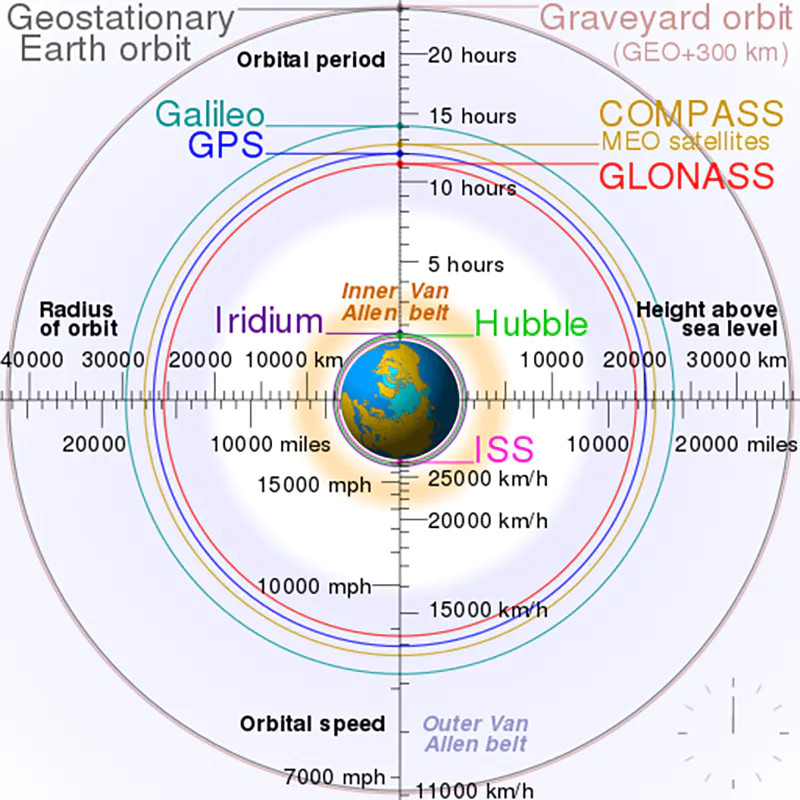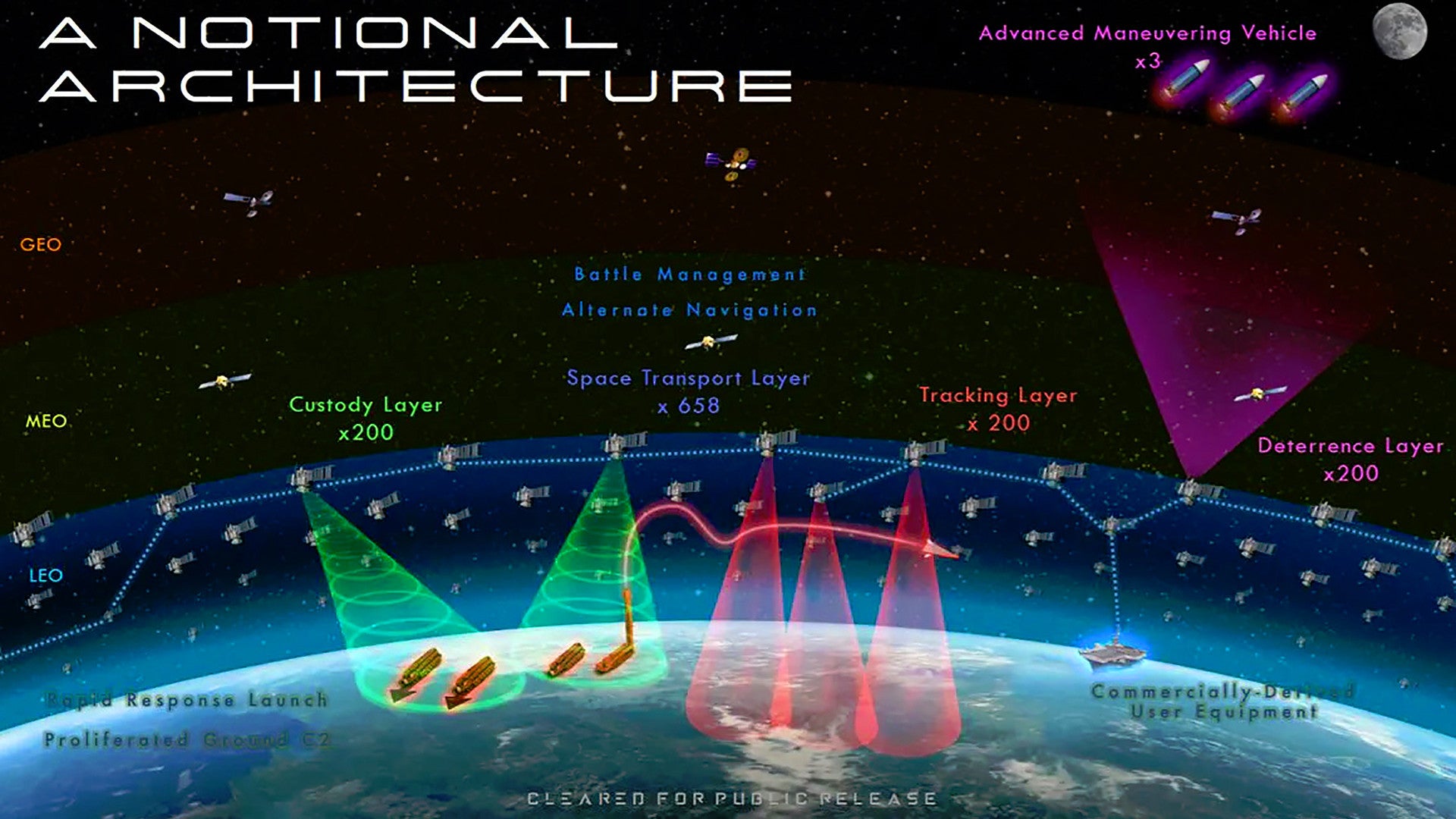The Air Force is running an internal competition to pick a new project to explore potential military activities in new areas of space. In the running are proposed efforts to examine the potential uses of very low orbits around the Earth, as well as operations in cislunar space between the Earth and the Moon where there are growing concerns about future competition with potential adversaries, especially China.
Air Force Colonel Eric Felt, head of the Air Force Research Laboratory’s (AFRL) Space Vehicles Directorate, revealed the contest during an online event that Space News hosted on June 5, 2020. Felt said that four separate teams within his directorate had crafted possible projects and that he could pick a winner in July. The winning pitch will get funding in order to carry out a demonstration.
“The best payoff is coming from things that we’re not currently doing in space today,” Felt said. He did not offer specific details about what the four teams are working on, but said that at least one of them dealt with concepts of operation closer to Earth than where the U.S. military is currently active while another was looking beyond traditional orbits around the planet.

Very low earth orbits, or vLEO, defined as been between around 124 and 186 miles above the Earth’s surface, has been associated often with limited experimental spaceflight, though it was also where early reconnaissance satellites operated. Satellites and other craft operating at these altitudes are more susceptible to the planet’s gravitational pull and require some kind of constant propulsion to prevent them from falling back down.
The weight and bulk of the propulsion systems required for sustained operation in vLEO have made the entire proposition impractical in the past. “Now, we’ve got better technology for in-space propulsion,” Felt said.
The head of AFRL’s Space Vehicles Directorate did not offer any specific examples, but the Air Force has used its shadowy X-37B mini-space shuttle to test a Rocketdyne’s XR-5A Hall-effect thruster, a high-efficiency electric propulsion system, in the past. Observers on the ground have noted that the X-37B has demonstrated a significant degree of maneuverability in space, something that senior Air Force officials have further alluded to in the past, as well.
The X-37B recently launched on its latest mission, in Low Earth Orbit, where it has been conducting tests of a potentially game-changing microwave power beaming system, among other tasks, which you can read about in more detail in these past War Zone pieces.

Being able to operate regularly in vLEO “opens up this new orbital regime for potential use,” Felt continued. This could be important as traditional LEO and other orbital areas around the Earth become increasingly packed with both military and commercial satellites from around the world, as well as potentially hazardous “space junk,” such as failed or otherwise inoperable satellites and other debris.

Launching satellites and other spacecraft into vLEO would also require less effort than putting them into higher orbits. This, in turn, could make it an attractive area for rapidly putting new or replacement capabilities into space, including via air-launched, two-stage-to-space launch systems, something you can read about more in this past War Zone piece.
The U.S. military, among others, has been actively exploring various options for quickly launching satellites as potential adversaries, such as Russia and China, continue to develop and field new and improved anti-satellite capabilities, including ground-based and air-launched anti-satellite interceptors and potential “killer satellites.” American forces rely heavily on space-based assets for a wide array of tasks, including early warning, intelligence-gathering, navigation and weapons guidance, and communications and data sharing. The disruption or loss of satellites performing those tasks could put them at a distinct disadvantage in a major conflict.
Concerns about competition and potential conflict in space are increasingly not limited to traditional orbits around the Earth, either. This brings up the proposal Colonel Felt described that deals with activities in cislunar space, situated outside of Geostationary Orbit, or GEO, which is defined as around 22,236 miles above Earth’s equator.

“We in AFRL are working on technologies to expand space domain awareness above the GEO belt – so from the GEO belt all the way to the Moon and even a little bit beyond,” Felt explained. “It’s what we call the xGEO, or the cislunar, area of operations. And as commercial people move there, and our adversaries move there, that becomes an area where we need to know what’s going on up there.”
Though not named, the primary potential adversary in cislunar space that Felt was likely referring to is China. The Chinese national space program has a heavy emphasis on expanding missions around the Moon, which includes plans for a manned mission there in the 2030s. In January 2019, China’s Chang’e 4 spacecraft became the first ever to touch down on the far side of the moon.

These activities have raised concerns within the U.S. military about whether the Chinese might be able to launch attacks from the Moon or cislunar space in the future. While experts have questioned whether doing so would be practical or feasible, at least at present, the Air Force, especially, has nevertheless begun to focus on the matter of potential competition in these spaces, especially as American military and civilian space programs also turn to areas further away from Earth.
“As the space beyond geosynchronous orbit becomes more crowded and competitive, it is important for the Air Force to extend its space domain awareness responsibilities to include this new regime,” a December 2019 contracting notice from AFWERX, a technology incubator the service established in 2017, noted. “The Air Force is seeking commercial innovation in support of space domain awareness for future cislunar operations.”
Breaking Defense also pointed out that AFRL’s Space Vehicles Directorate, especially with regards to this new internal contest, could be facing a different kind of competition, with the new Space Force, which might seek to take over the winning project. The Directorate’s future, as a whole, is uncertain, with Secretary of the Air Force Barabara Barrett, explaining in March that it would likely be subject to a convoluted arrangement by which its personnel would technically be reassigned to Space Force, which would then put them back under the direct oversight of AFRL. Space Force, while a separate branch, is also formally within the Department of the Air Force and Secretary Barrett is the top civilian authority for both services.
Other turf wars have already been emerging with regards to project that cross space and terrestrial domains. This includes a project known as XVI, another AFRL-led effort that is exploring using satellites equipped with Link 16 data links in LEO to expand the range and capabilities of that widely used waveform, which relies primarily on a line-of-sight concept of operations.

“There are some 30,000 Link 16 radios out there,” Colonel Felt said during the online event. “You would basically have a Link 16 capability everywhere, all the time, all over the world, and that is [a] pretty powerful enabler to our warfighters.”
The Air Force has also been exploring the use of constellations of smaller satellites, including commercial options such as SpaceX’s Starlink, as a general means to expand and distribute space-based communications and other capabilities. These concepts notably offer potential additional protection against enemy attacks, since an opponent would have to destroy a far larger number of total satellites to disrupt or destroy the network in question. These are the kind of projects that the Air Force is presently fighting to retain control over rather than ceding them to Space Force.

It will be very interesting to see what project Colonel Felt eventually deems to be the winner of the internal contest. Whatever the case, its clear indicator that competition between the United States and other countries in space, as well as between the Air Force and Space Force over who gets to oversee new projects focused on those areas, is ramping up.
Contact the author: joe@thedrive.com
